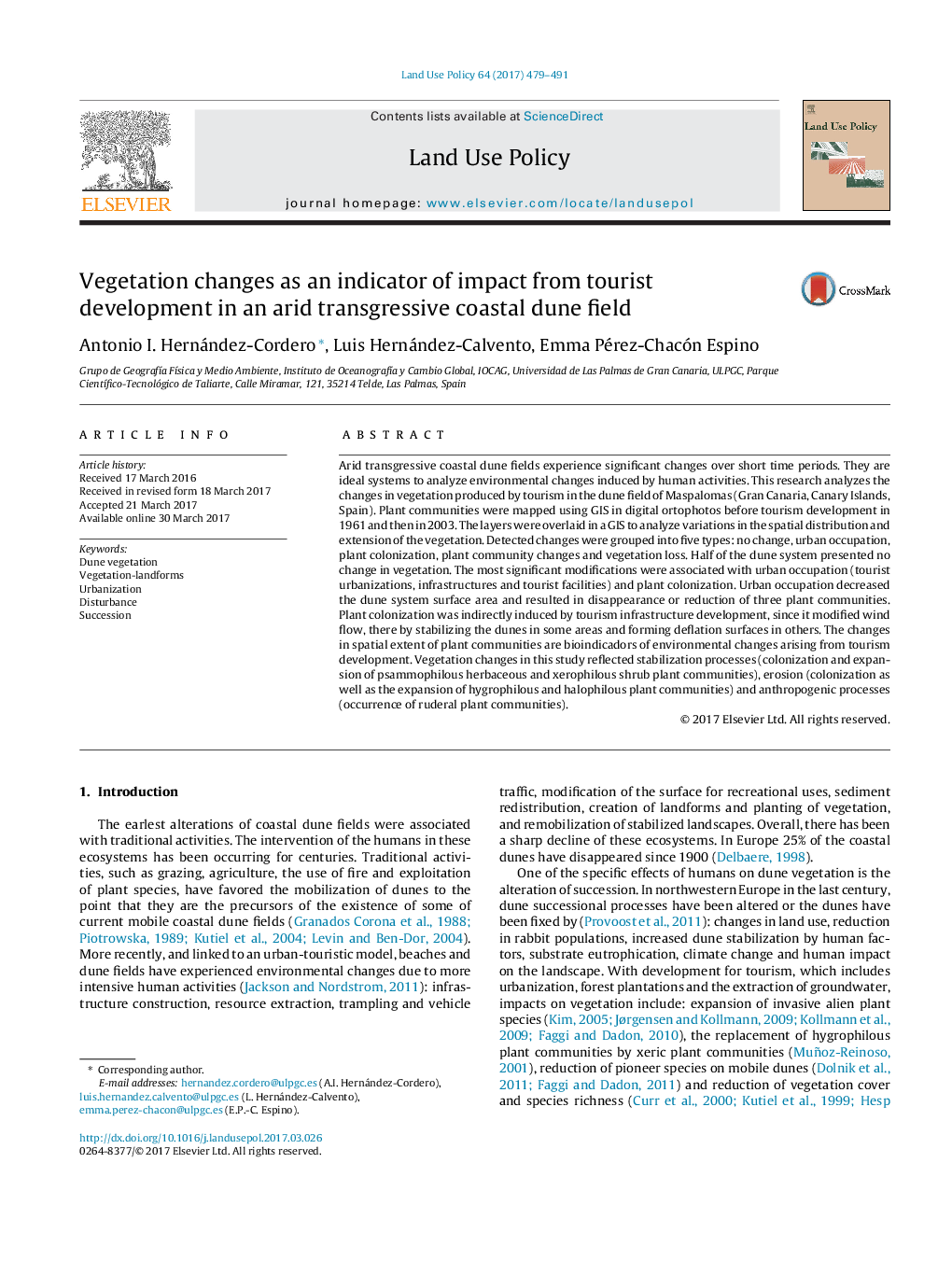| کد مقاله | کد نشریه | سال انتشار | مقاله انگلیسی | نسخه تمام متن |
|---|---|---|---|---|
| 6460883 | 1421819 | 2017 | 13 صفحه PDF | دانلود رایگان |
- Changes in the surface of the plant communities constitute an excellent bio-indicator.
- The vegetation was affected directly and indirectly by touristic development.
- The most of the plant communities have increased their extension.
- Other plant communities have disappeared or reduced by the touristic development.
- Especially significant is the decline in the area occupied by the T. moquinii community.
Arid transgressive coastal dune fields experience significant changes over short time periods. They are ideal systems to analyze environmental changes induced by human activities. This research analyzes the changes in vegetation produced by tourism in the dune field of Maspalomas (Gran Canaria, Canary Islands, Spain). Plant communities were mapped using GIS in digital ortophotos before tourism development in 1961 and then in 2003. The layers were overlaid in a GIS to analyze variations in the spatial distribution and extension of the vegetation. Detected changes were grouped into five types: no change, urban occupation, plant colonization, plant community changes and vegetation loss. Half of the dune system presented no change in vegetation. The most significant modifications were associated with urban occupation (tourist urbanizations, infrastructures and tourist facilities) and plant colonization. Urban occupation decreased the dune system surface area and resulted in disappearance or reduction of three plant communities. Plant colonization was indirectly induced by tourism infrastructure development, since it modified wind flow, there by stabilizing the dunes in some areas and forming deflation surfaces in others. The changes in spatial extent of plant communities are bioindicadors of environmental changes arising from tourism development. Vegetation changes in this study reflected stabilization processes (colonization and expansion of psammophilous herbaceous and xerophilous shrub plant communities), erosion (colonization as well as the expansion of hygrophilous and halophilous plant communities) and anthropogenic processes (occurrence of ruderal plant communities).
Journal: Land Use Policy - Volume 64, May 2017, Pages 479-491
